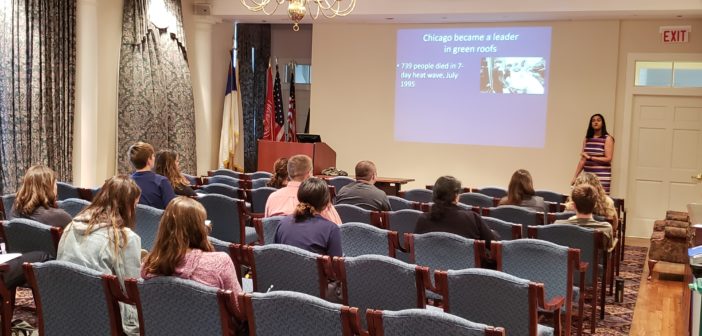The Center for Global Education held its first Sustaining the Globe event of the year on Sept. 28. This program is in its second year of a three-year series. Dr. Bala Chaudhary, an environmental studies professor at DePaul University, presented on “promoting urban biodiversity and ecosystem services of green roofs with plant symbionts.”
Green roofs, according to Chaudhary, are vegetative layers grown on the roofs of buildings, typically in large urban environments. This provides many services, such as insulating buildings, absorbing stormwater runoff and storing carbon to mitigate greenhouse gas emissions. “For every inch of rain that falls, 75 percent of that is prevented from running off into stormwater systems,” Chaudhary said.
For her research, Chaudhary studies the role of arbuscular mycorrhizal (AM) fungi in maximizing these services. AM fungi have a mutualistic relationship with plants, allowing them to receive energy from the sun while giving the plants nutrients. “Plant symbionts impact plant diversity and community structure,” Chaudhary said.
While NCC doesn’t currently have any green roofs, this is something that could be incorporated into campus. Assistant professor of biology Dr. Joanna Weremijewicz said that green roofs could be installed on the borders of rooftops with solar panels, such as Res/Rec and New Hall. Having both green roofs and solar panels is even more beneficial than just having one or the other.
Green roofs provide ecosystem services while solar panels help with the energy efficiency of buildings. “The benefits to things like insulating buildings can help offset some of those extra energy costs,” Weremijewicz said.
Ashley Wojciechowski, ’19, said, “I most enjoyed learning that (Chaudhary) has found that AM fungal spores can be wind dispersed as if AM fungi find a way to get to green roofs that had no fungi before.”

